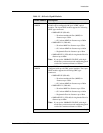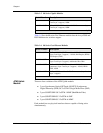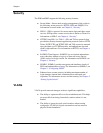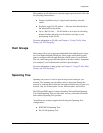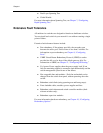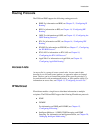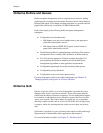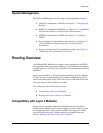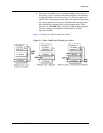
Document No. 10-300077, Issue 2 1-21
Introduction
System Management
The P580 and P882 support the following system management features:
■ LDAP. For information on LDAP, see Chapter 12, “Configuring IP
Routing.”
■ RMON. For information on RMON, see Chapter 23, “Using RMON
and Ethernet Statistics to Analyze Network Performance.”
■ SNMP. For information on SNMP, see Chapter 5, “Configuring
SNMP.”
■ Port mirroring. For information on port mirroring, see Chapter 23,
“Using RMON and Ethernet Statistics to Analyze Network
Performance.”
■ Syslog event reporting. For information on syslog, see Chapter 21,
“Monitoring the Avaya Multiservice Switch.”
Routing Overview
All P580 and P882 Multiservice switches can be configured as an IP, IPX,
and AppleTalk router with virtual interfaces. Virtual interfaces are mapped
to physical ports or VLANs. Layer 3 IP traffic is routed between the virtual
interfaces.
Ports become members of VLANs by being assigned or by rules. Multiple
VLANs can share a single trunk port. In contrast, multiple physical ports
can be associated with a single VLAN. In all cases, traffic that arrives and
leaves the same VLAN is bridged, not routed.
This section provides the following sections:
■ Compatibility with Layer 2 Modules
■ Routing with Layer 2 and Layer 3 Modules
Compatibility with Layer 2 Modules
Each switch is completely backward compatible with all of the layer 2
media modules that the switch currently supports. Layer 3 traffic is routed
by sending that traffic to the supervisor module. The supervisor module
routes all traffic from layer 2 media modules as described in the next
section, “Routing with Layer 2 and Layer 3 Modules.”



